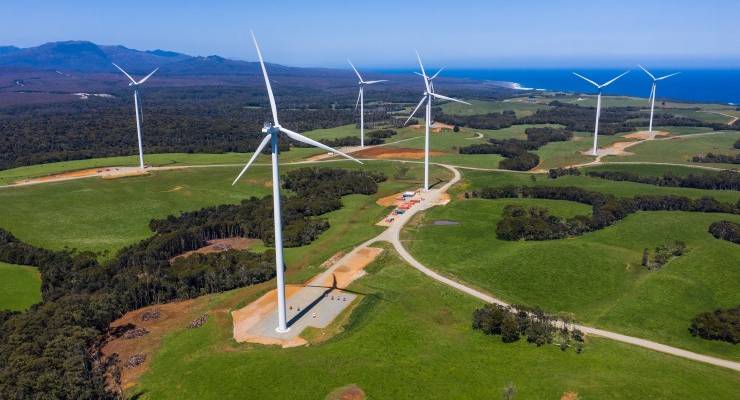
To hear veteran economist Ross Garnaut tell it, Australia can not only become a green energy superpower, it basically is one — but for the passage of time.
The story goes roughly like this: home to a big, sunny, windy country, Australia has a comparative advantage in raw energy that can be easily harnessed into domestic, green industrial production.
“If we don’t muck up the opportunity, we will be by far the world’s largest exporter of iron metal and steel, as well as a global leader in aluminium metal,” Garnaut says.
It’s an optimistic vision. But how realistic is it?
Notice that — at least in version 1.0 of his vision — Australia’s superpower status will not involve exporting green energy, instead using it to manufacture green steel and aluminium. The argument goes like this: it’s more efficient to ship Queensland (metallurgical) coal to Japan or China to make steel than it is to South Australia. But hydrogen has to be liquefied to be transported, and that’s both expensive and involves a lot of energy loss.
This means hydrogen is well suited to highly decentralised production. Moreover, Australia isn’t exactly the only country with hydrogen plans. For instance, earlier this year Breakthrough Energy Ventures — a coalition of green energy investors founded by Bill Gates and including Jeff Bezos, Richard Branson, Michael Bloomberg, and Jack Ma — invested in Israeli company H2Pro which aims to produce green hydrogen at US$1 a kilogram.
Gates and co probably aren’t investing in H2Pro because Israel has a mortal lock on water or sunshine. They’re presumably investing because of the technology the company has and will continue to develop. It’s the innovation, not the natural resources, that are the scarce input. And to that end, I don’t see lots of Israeli economists running around declaring Israel to be the next “green energy superpower”. If Australia’s hydrogen isn’t produced from renewable energy sources (i.e. if it is “blue”, not “green”) our export markets for it or resulting products will be limited at best.
By contrast, Sun Cable’s Australia-Asia Power Link leverages the fact that Australia has a lot of sunshine and cheap land. Or, as it puts it, aims to “harness and store solar energy from one of the most reliably sunny places on the planet in the Northern Territory of Australia, for 24/7 transmission to Darwin and Singapore via a high voltage direct current (HVDC) transmission system”.
A key aspect is the ability to run a cable from Darwin to Indonesia and then Singapore with little energy loss in a reliable and cost-effective manner. Ten years ago that looked like science fiction. Today it looks like reality.
Here, Australia really does have a comparative advantage that’s hard to replicate. Which other country has abundant, reliable and cheap sunshine right on the doorstep of Asia? Without the technology that’s not worth much, but it looks increasingly like we will have both.
There’s one additional ingredient to getting these green energy projects off the ground: the ability to assemble large amounts of financial capital. As I’ve pointed out before, a large block of capital can play a vital role in assembling the required capital for a big project.
But it need not just be a large block of capital. It can also be a highly connected person. Most projects in most walks of life require bringing together different constituents to make it successful. In the case of green energy that includes politicians, business leaders and environmentalists — at a minimum.
Coordinating these sometimes disparate interests requires more than just money. It requires what Robert Akerlof and I call a “mover and shaker”. This raises a number of questions. Who is central in the relevant network of actors? What attributes does such a person need to act as a focal point? Might it be that we end up coordinating on the wrong person and hence the wrong technology?
I will explore all these issues in a companion piece. But let’s not forget that the world of the 1980s coordinated on VHS not Betamax, despite the latter being a superior technology. It turns out that this logic extends past 1980s technology and other boomerish examples. Stayed tuned.
All this suggests the need for a more clear-eyed view of what it takes for success in the green energy ecosystem.
It will take a lot more than cheerleading to achieve such a fundamental economic transformation. Let’s not forget that there were plenty of hobbyists and enthusiasts in Silicon Valley in the 1970s. But it wasn’t random enthusiasts at the Homebrew Computer Club, but Steve Jobs who changed the world. And Jobs was not an enthusiast. He was a revolutionary.
Who will be our Steve Jobs?








Much of this will ride on public investment in the intellectual infrastructure, for example, CSIRO and the universities. The big challenge for government is not only in committing sufficient funds for the long term, it also lies in supporting the pure research because this is what provides the grist for the applied research mill. Sure private sector actors can have a role to play but they do so on a base proved by the community.
The great scientific and engineering achievements of past generations of Australians were for the most part funded, built and run as public enterprises. They were often created as a response to market failure as in the case of the electricity generation and distribution systems. Since the 1980s we have rejected this approach; to our great cost. I hope to live long enough to see the lessons of the past learned, (and sometimes relearned).
This argument sounds suspiciously like the “better is the enemy of good” argument against getting started and having a go.
People get very excited about technological advances, and the next 1% of photovoltaic efficiency will be greatly cheered, but with the on-going cost of inputs being zero, the real win goes to reasonable efficiency at the lowest construction price, and even that is fairly rapidly displaced by just being in play for longer, converting some area of zero-dollar sunlight into chargeable power (or aluminium, if that turns out to be the best way to ship energy).
What technology are you waiting for? The stuff that is available works. Get cracking. You’ll probably be able to improve and course-correct as you go, as the learning curve is a real thing, but starting is important.
If any of this looks for a minute that it might involve an industrial site or entity with an easily unionised work force forget it. No matter how good an idea might be for Australia or the world it still has to be acceptable to the status quo. That means no possibility of a unionised workforce. In fact stand by to be told Aussies dont want the jobs, they’ll get blackbirds instead with special visas. Conditions will include that they cant unionise. An extra benefit is they cant vote. Whats not to like?
All well and good but ignores the elephants in the room who have been effectively delaying any use of and transition to renewable energy sources vs. fossil fuels.
These elephants in the room include the LNP, Greens/Labor (also sub-optimal), US linked think tanks, fossil fuel sector, legacy media, political grifters and most of all, the Australian electorate.
Why? Deep seated conservatism which is able to nobble any innovation by our need to cling onto old ideas, ways, avoidance of costs or taxes, and dismissing science as a ‘belief system’, presented as Australian values and culture.
Is there a critical element missing from Richard’s timely promotion of green energy technology? Garnaut’s vision to exploit not only provision of hydrogen; but also to benefit from manufacturing associated product via use of hydrogen. However, Nature has both hands around dooms-day clock. And that is the rogue element. Climate-threat is global. And thus far no clear accepted consensus, has emerged. So we have opportunity, but also a very restricted timeline in which to achieve? World consensus on how, what, why and when most likely a future global challenge yet to be imagined. Much less resolved without contesting natural environmental instabilities and, herding of disparate national, international prioritization(s)?